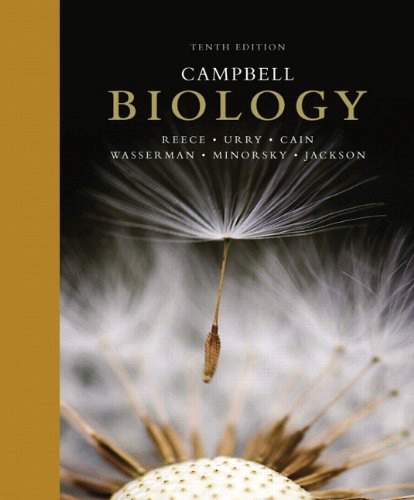Connecting...

This is a quick preview of the lesson. For full access, please Log In or Sign up.
For more information, please see full course syllabus of Biology
For more information, please see full course syllabus of Biology
Biology Cell Division
Lecture Description
In this lesson, our instructor Bryan Cardella gives an introduction on cell division. He explains the purpose of cell division, cell size limitations, the cell cycle, chromosome structure, interphase, mitosis, prophase, metaphase, telophase, cytokinesis, cancer in relation to mitosis, and meiosis.
Bookmark & Share
Embed
Share this knowledge with your friends!
Copy & Paste this embed code into your website’s HTML
Please ensure that your website editor is in text mode when you paste the code.(In Wordpress, the mode button is on the top right corner.)
×
Since this lesson is not free, only the preview will appear on your website.
- - Allow users to view the embedded video in full-size.
Next Lecture
Previous Lecture










































 Answer Engine
Answer Engine

1 answer
Thu Oct 25, 2018 2:15 PM
Post by Adnan Badawi on October 24, 2018
Which paragraph is correct for meiosis I and II because i'm having two
different ideas about them and i don't know which one is correct
(First)
1.Meiosis I separate haploid and diploid after DNA replication
Meiosis two makes 23 haploid and when they pair with diploid they will make
23 diploid?
(Second)
2.Meiosis I separate haploid and diploid after DNA replication
Meiosis II separate the homologous pairs.
The 4 daughter cells. The first two daughter. each one has half of
the haploid, third and fourth each one has the half of
diploid
when they pair they will make 46 chromosomes?
*I need help to understand it prof. thank you
according to this image
https://www.google.com/imgres?imgurl=https://qph.fs.quoracdn.net/main-qimg-4ab53f285d40e40a55cfa6d5fa300638&imgrefurl=https://www.quora.com/Is-meiosis-1-diploid-or-haploid&h=448&w=602&tbnid=YZrEJEpPKA7G_M:&q=meiosis+1+produces&tbnh=160&tbnw=214&usg=AI4_-kSNGnTd1U1IHVYbT1Bi1G2H0LJA5g&vet=1&docid=qIu0TIZYHP-HYM&sa=X&ved=2ahUKEwjT05XAqKDeAhUJzlMKHVo1DEQQ9QEwAHoECAUQBg
1 answer
Fri Apr 14, 2017 10:27 AM
Post by Nofar Marom on April 13, 2017
Hi,
Regarding Mitosis:
During Interphase in G1 phase right before S phase - replication, the cell contains 46 chromosomes ? why? then if it replicated during s phase would it be actually 92 chromosomes ? which then will separate? something mathematically does not make sense to me. If we start with 46 chromosomes that after anaphase the sister chromatids are being separated from one another in opposite poles, wouldn't the cell end up with 23 chromatids that then will be replicated to 46 chromosomes?
R
Would appreciate your answer.
3 answers
Thu Jan 5, 2017 7:12 PM
Post by Kapil Patel on January 4, 2017
Hi Mr. Cardella
I have a question where can we found tRNA?
1 answer
Tue Nov 3, 2015 9:36 AM
Post by Rigers Ahmetay on November 3, 2015
How can I reference this source using Havard system
2 answers
Last reply by: Hossain Khondaker
Thu Jun 25, 2015 9:47 AM
Post by Hossain Khondaker on June 24, 2015
hi I was just wondering is there any text books you recommend for I am about to be a freshman in high school and I got placed at AP Biology.
1 answer
Fri May 15, 2015 11:05 PM
Post by Khalid Khan on May 15, 2015
The funny thing is that you are a better teacher than my own bio teacher...:P Thanks so much for all these amazing lectures!
4 answers
Thu Mar 12, 2015 11:38 AM
Post by Natali Cohen on March 5, 2015
Dear Mr. Gonzalez,
Some point still not so clear for me. Diploid cell contain 46 chromosomes before the division. Thus if DNA, which is chromosomes replicated, we will start with 92 chromosomes in original cell?
Sincerely
Natali
1 answer
Wed Dec 31, 2014 1:31 AM
Post by Setayesh Omidian on December 30, 2014
Hi Mr. Cardella
So once we are done with meiosis we have 23 chromosomes,but how do we end up with 46 to go through meiosis again?
1 answer
Sun Nov 23, 2014 7:43 PM
Post by Richard Meador on November 22, 2014
Thanks very much for your answer on my reverse engineering question. It looks like there are almost unlimited number of details and complications.
One final question: What cell or what type of cell would be the most likely candidate to reverse engineer given that all cells are incredibly complicated? Is there a "least complicated cell" that biologists have identified?
1 answer
Sat Nov 22, 2014 3:17 PM
Post by Richard Meador on November 22, 2014
you stated that all cells come from existing cells. what's the main technical limitation that keeps biologists from creating a living cell? In other words, why can't they reverse engineer a living cell such as a simple plant cell given they have total access to study the cell?
1 answer
Wed Oct 29, 2014 9:27 PM
Post by Judy McAfee on October 29, 2014
How are the cells at the end of mitosis compare to the cells at the end of meiosis I ?
6 answers
Last reply by: Brady Dill
Wed Jul 30, 2014 7:42 PM
Post by Brady Dill on July 25, 2014
Meiosis, huh? So that story about storks and doorsteps was a lie? Apparently I have a bone to pick with my parents...
Great video! In each sperm or egg, are the 23 of the 46 chromosomes totally random? Does this mean, in theory, that two siblings could be completely unrelated?
1 answer
Fri Jun 27, 2014 1:40 AM
Post by David Gonzalez on June 26, 2014
Where exactly is Meiosis occurring if the person isn't born yet? Thanks Mr. Cardella.
2 answers
Last reply by: Duru Bumedien
Sun Mar 30, 2014 7:30 AM
Post by Duru Bumedien on March 29, 2014
Hi Mr. Cardella
I have a question about 2n and n chromosome. So humans have 2n=46 chromosomes. Does it mean that we have 23 chromosomes with two sister chromatids in each cell or do we have 46 non-dublicated chromosomes in each cell?